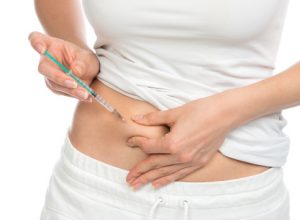 Researchers have found insulin resistant boost is due to gut bacteria in the digestive system and genetic factors. Insulin is a hormone created by the pancreas and has a large role in metabolism. When the food we eat is broken down it turns into glucose which is a type of sugar that enters the bloodstream. Insulin is what helps cells absorb glucose in order to provide the body with energy.
Researchers have found insulin resistant boost is due to gut bacteria in the digestive system and genetic factors. Insulin is a hormone created by the pancreas and has a large role in metabolism. When the food we eat is broken down it turns into glucose which is a type of sugar that enters the bloodstream. Insulin is what helps cells absorb glucose in order to provide the body with energy.
Glucose spikes post-meal, and that is when the pancreas pumps out the most insulin in order to absorb the excess glucose. Insulin regulates the amount of glucose found in the body, but when a person is insulin resistant glucose levels can become quite high or drop low which is seen in those with diabetes.
What is insulin resistance?
Advertisement
Insulin resistance is when insulin cannot perform its function of absorbing and managing glucose properly. Even though it is still being created by the pancreas, insulin is not being used correctly, thus causing an influx of glucose in the bloodstream.
Insulin resistance may be symptomless for years, and people may not even know they have it until they go in for a check-up with the doctor. If caught early enough they can partake in lifestyle habits to improve their insulin and prevent type-2 diabetes.
Symptoms of insulin resistance
As mentioned, insulin resistance is symptomless and people can go for years without realizing they are insulin resistant. Some individuals may develop dark patches on their skin – this is called acanthosis nigricans. Although there is no cure for acanthosis nigricans, if insulin resistance is treated the skin may clear up.
Insulin resistance can also contribute to damage in the blood vessels, which can increase a person’s risk of developing heart disease. Other symptoms of type-2 diabetes include extreme thirst, frequent urination, tingling in the fingers and toes due to possible nerve damage, fatigue and feelings of hunger even if you just ate.
Causes and risk factors of insulin resistance
There are many contributors which can lead to insulin resistance, although an exact cause is unknown. They include:
- Excess weight: Obesity has been shown to contribute to insulin resistance. Furthermore, fat can contribute to chronic inflammation which leads to the malfunctioning of many bodily functions – including insulin resistance.
- Lack of exercise: Muscles become more sensitive to insulin post-exercise making them better able to absorb it. More muscle in the body means glucose burns off better, thus levels become controlled.
- Ethnicity
- Certain diseases
- Hormones
- Steroid use
- Some medications
- Aging
- Sleep problems like sleep apnea
- Smoking
- Family history
Preventing insulin resistance
The easiest and most effective way to prevent insulin resistance is through healthy lifestyle choices which you have control over. Although family history, age and ethnicity are uncontrollable, there are still many factors within a person’s control that can help prevent insulin resistance.
Exercise, losing weight, not smoking, managing sleeping problems and managing underlying health issues are all ways to prevent insulin resistance. Eating healthy, too, is an effective means to prevent insulin resistance. Stick with fruits, vegetables, whole grains, nuts, fish and lean meats as a part of your daily diet to keep you on track and prevent insulin resistance. On the same point, there are foods which you should avoid as they promote weight gain which can contribute to insulin resistance. Avoid soda, fatty-foods, sugary foods and beverages and processed goods.
You don’t have to develop insulin resistance, even if you have a family history. Simple lifestyle changes are easy to implement and can greatly improve your health overall.
Related Reading:
Effects of insulin on heart health
If you have type-2 diabetes there are many ways to receive insulin, such as rapid-acting insulin, short-acting insulin and long-acting insulin. Long-acting insulin can last from 24 to 36 hours after administered. Continue reading…
Smart phones, smart cars and not smart insulin
Advertisement
Just imagine: Instead of repeated blood tests and injections to keep blood sugar and diabetes in check every day, a single dose of “smart” insulin could circulate in the body and turn on whenever needed. Continue reading…
Sources:
http://www.healthline.com/health/diabetes/insulin-resistance-diet#Exercise4
http://www.healthline.com/health/diabetes/insulin-resistance-symptoms#Prevention4
http://www.webmd.com/diabetes/tc/insulin-resistance-topic-overview
http://www.niddk.nih.gov/health-information/health-topics/Diabetes/insulin-resistance-prediabetes/Pages/index.aspx#resistance
http://www.joslin.org/news/Genetic-factors-drive-roles-of-gut-bacteria-in-diabetes-and-obesity.html
http://medicalxpress.com/news/2015-09-bacterial-mammalian-genomics-interact-boost.html
http://www.sciencedaily.com/releases/2015/09/150903131728.htm
